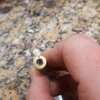ReedTX
Member
Hello all,
I have around 180 rounds of brand new Winchester white box 7.62 FMJ that I was given. I know I can shoot this through my .308 safely but I want to know is if I can reload this to .308 loads?
I found this thread https://www.thehighroad.org/index.php?threads/reloading-7-62-brass-for-a-308-question.306424/ and I am still none the wiser.
Does anyone have any experience? I do not want to really pull the bullets and would like to just use it for practice in my bolt gun.
I want to use my .308 Lee full length dies. Is it possible?
Thanks!
I have around 180 rounds of brand new Winchester white box 7.62 FMJ that I was given. I know I can shoot this through my .308 safely but I want to know is if I can reload this to .308 loads?
I found this thread https://www.thehighroad.org/index.php?threads/reloading-7-62-brass-for-a-308-question.306424/ and I am still none the wiser.
Does anyone have any experience? I do not want to really pull the bullets and would like to just use it for practice in my bolt gun.
I want to use my .308 Lee full length dies. Is it possible?
Thanks!




